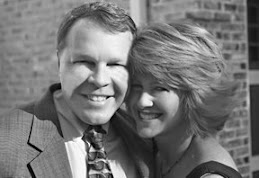
After the 35 miles of trekking to Machu Picchu, the Peruvian Amazon seems a bit calm. Here, the excitement comes in enjoying the journey, not in reaching the destination. Canopy and rainforest walks are slow and cautious to allow for better viewing of the animals. In this Madre de Dios region, I’m staying in the Manu Reserve in Reserva Amazonica, a property with 34 individual eco-huts complete with bathrooms, mosquito netted beds and two lovely hammocks crying out to me on my screened porch. Lanterns dot the walkways and your porch at night, adding a pleasant glow to your walk home from dinner. After a plane, truck & boat to get here, a little luxury is greatly appreciated.
The region boasts of 20,000 plant, 1,200 butterfly, 1,000 bird, 200 mammal and 100 reptile species identified so far. Largely ignored during the Spanish conquest, the region grew in the 19th century with the discovery of shiringa- the rubber tree. Still, very few people live outside the entry city of Puerto Maldonado.
Yesterday on our afternoon forest hike, we ran across a large troop of squirrel monkeys. It was like a scene from the movie, “Predator.” The forest felt alive, branches moved above our heads and you could hear movement all around you but barely get glimpses of the feisty little creatures. Another find was the poisonous chicken spider. Our guide showed us the holes they use as homes and proceeded to prod a baby spider (a furry 4 inches long) out of his hole. I’m glad his mother decided to stay put as they grow to the size of your hand. In the spider department, we also saw tarantula nests growing in trees.
Today we spent the morning walking the numerous canopies and towers built above the forest. These provide exceptional bird viewing and offer a unique perspective on the trees and plants.
For some reason, I think my favorite animal so far are the brown Aguti that live on the fringes of the forest. These huge rodents which grow up to 14 lbs. are quite comfortable with humans as the property provides a nutcracker along the path so you can toss food to these critters. As they forage at night, they make quite a ruckus lending your imagination to thinking there must be a band of jaguars hunting outside your hut walls- ready to make you into their next meal. I think I like them most as they remind me of Scooby, always on the lookout for a treat.
Tomorrow I begin my journey home- a 2-day combination of canoe, plane and jeep. My ipod, eye covers & ambien are ready for the overnight voyage home.
The region boasts of 20,000 plant, 1,200 butterfly, 1,000 bird, 200 mammal and 100 reptile species identified so far. Largely ignored during the Spanish conquest, the region grew in the 19th century with the discovery of shiringa- the rubber tree. Still, very few people live outside the entry city of Puerto Maldonado.
Yesterday on our afternoon forest hike, we ran across a large troop of squirrel monkeys. It was like a scene from the movie, “Predator.” The forest felt alive, branches moved above our heads and you could hear movement all around you but barely get glimpses of the feisty little creatures. Another find was the poisonous chicken spider. Our guide showed us the holes they use as homes and proceeded to prod a baby spider (a furry 4 inches long) out of his hole. I’m glad his mother decided to stay put as they grow to the size of your hand. In the spider department, we also saw tarantula nests growing in trees.
Today we spent the morning walking the numerous canopies and towers built above the forest. These provide exceptional bird viewing and offer a unique perspective on the trees and plants.
For some reason, I think my favorite animal so far are the brown Aguti that live on the fringes of the forest. These huge rodents which grow up to 14 lbs. are quite comfortable with humans as the property provides a nutcracker along the path so you can toss food to these critters. As they forage at night, they make quite a ruckus lending your imagination to thinking there must be a band of jaguars hunting outside your hut walls- ready to make you into their next meal. I think I like them most as they remind me of Scooby, always on the lookout for a treat.
Tomorrow I begin my journey home- a 2-day combination of canoe, plane and jeep. My ipod, eye covers & ambien are ready for the overnight voyage home.





